Painting black on miniatures is one of those colors that seems easy at first. There’s no need to shade it, you can’t get darker than black, so it’s just highlights.
While true, black is a very difficult color to get right. Highlight too much and it comes off white or grey. Highlight too little and it just looks black.
I want to share with you what I’ve learned over years of painting black and give you some advice to help you get the results you want. There’s some considerations to be made with the base coat, mid-tones, and highlights.
I mention paint colors by name below. Unless noted otherwise, the colors are Citadel.
Disclosure: Some of the links below are affiliate links, meaning, at no additional cost to you, I will earn a commission if you click through and make a purchase. The commission earned helps maintain this site.
Black Base Coat
You can approach the base coat for black a few ways depending on what you’re after.
There is the obvious black for the base coat, but you could also base coat in a very dark blue as well if you wanted a bit more interest – think Batman’s suit. Also, a color like Incubi Darkness (a very dark teal) painted over a black primer is nearly black and looks great.
If you’re looking for something easy, then you could also base coat in a mid-tone grey, something like Administratum Grey, and apply a few heavy washes of black to get your shading and tone it down. That would give you a shading, base coat, and a mid-tone.
Another option is to use a very dark grey like Eshin Grey as your base coat. Leave the recesses black and paint Eshin Grey everywhere else.
So, there’s a few things you could do other than just using a pure black for your base coat and I’m sure there’s more ways as well that I just haven’t discovered.
Examples of Black Base Coats
The pants on this Ogre were base coated with Incubi Darkness and then washed twice with Nuln Oil. This was done over a white primer. It’s not exactly black but it gives me a color very close to black without being black, which was what I wanted in this instance.
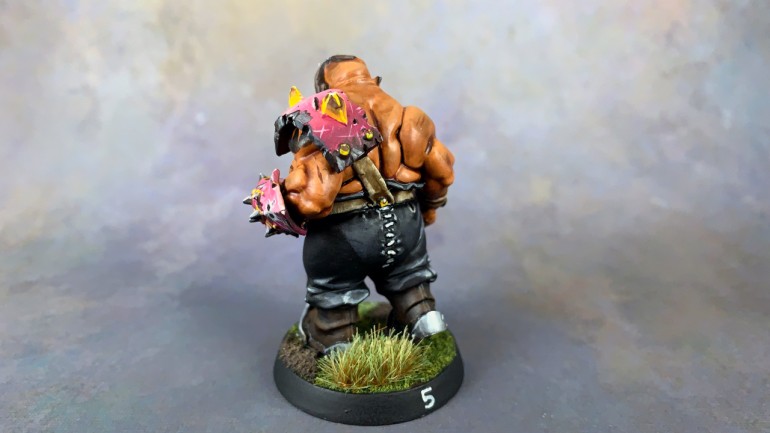
Here’s a simple, pure black base coat with greys for mid-tone and highlights.
With this Ogre I used Eshin Grey for a base coat and give it a few washes of Nuln Oil. It’s not quite black, but I’m just showing you some options.
Painting Black Mid-tones
I feel that getting a mid-tone right is probably the hardest part to working with black. If you go too bright then it won’t register as black, and if you don’t do a mid-tone at all then everything can just look flat.
My choice for a mid-tone is dependent on what I’m painting. I cover this more below, but something less reflective like cloth is going to have a darker mid-tone. By contrast, something that’s made of metal will have a stronger mid-tone because of the light reflecting off it.
I like to use Eshin Grey (very dark grey), as my mid-tone color. I leave the recesses black and paint the grey only in spots that are going to catch the light. This lets me transition into highlights a bit more subtly.
If I’m doing something more reflective, then I will step up to a mid-grey, something like Administratum Grey. It’s a strong jump but it emphasis the reflective nature of the material.
Other than greys, and I talk more about this in highlighting, I like to use blue-greys too. A dark slate colored blue is a great option. I have two colors like to use for this: Sombre Grey (Vallejo), and Dark Reaper (Citadel).
Those are the colors I like to use if I’m going to highlight with a blue-grey later.
Examples of Black Mid-tones
In this example I used Incubi Darkness as a mid-tone for black. It’s barely visible but gives the black a more interesting look.
On the left Flesh Golem you’ll notice I have some dark blue-grey mid-tones in there, as well as highlights. Those were the colors I used for the skin and wanted to blend in with.
On that right Flesh Golem I did the same thing on the leather jacket. It’s easier seen on the collar. I went a bit brighter because leather is more reflective than cloth pants.

The boots on this Ogre used Eshin Grey as a mid-tone. It’s very hard to see, you’ll have to click it to see better.
It’s pretty subtle, but you’ll notice a darkish grey used as a mid-tone on the shoulders. This was some early blending of mine and I was afraid to go too bright. However, it works but registers as a more dulled metal than reflective armor.
If you look at that camera left leg then you’ll see a dark grey used as a mid-tone. It’s not the darkest grey I could have used, as I wanted to get some contrast on there, but it’s not overly bright either and still comes across as black.
Last example. I used a dark blue-grey for the mid-tone on the black. It’s more noticable higher up on the shoulder.
Black Highlighting
The first color most miniature painters think of to highlight black with is grey. It’s a valid color to use and I use it all the time. However, there’s other colors you can use as well.
Using blue-greys or white-blue to highlight black is a great way to add some interest to the black. Using greys, especially when you’re dealing with a large area of black, can give the miniature a very bland and mono-tone look. A blueish grey though just looks more interesting.
You can also use blue-greens, turquoise, etc. Anything that runs in the blue/green color family can make for an excellent highlight on black.
Other than greys and blues, you can honestly use any color to highlight black. It really comes down to what you’re after. For example, highlighting black with a vibrant green, while seeming odd, is a great way to give a very interesting effect. It will come off as an edge glow on the miniature, which could be exactly what you’re after.
The same of true of any color. Highlighting black with a dark red will give the impression that the material is a very dark red and barely registers light, hence the dark red highlight only.
The color I choose for painting black highlights will come down to the miniature’s composition. What other colors are on the model? What colors are next to the black area I’m highlighting?
If I’m painting a miniature with lots of grey tones then I might stick with a grey highlight to intentionally give a mono-tone look. Using a blue-grey in that instance might look off. If I’m painting with lots of reds then I like to use a blue-grey and white-blue highlights because it’s a great complimentary color to red and will pull it together.
A grey highlight will always work, it’s a neutral color, but think about the entire model and choose a highlight color that will tie into everything else you’ve done.
Examples of Painting Black Highlights
All of the black on these were highlighted with blue-greys. The lightest highlight you see here is Fenrisian Grey.
The highlights on the black here are a white-blue and a grey-blue. That lightest color you see is Ghost Grey (Vallejo). It’s my favorite white-blue for strong highlights on black.
The lighter highlight on there is Fenrisian Grey. I like to use a combo and go from Fenrisian Grey to Ghost Grey as a transition.
The highlights on the black, most noticeable on the helmet wings and knee guard wings/skull, are with a white-blue (Ghost Grey) and even some pure white.
I did use greys for the mid-tones on this to create the overall look you see. You can combine varying types of greys and whites for a unique look.
Again, more blue-greys and white-blues for highlights on these. You can better see that Fenrisian Grey to Ghost Grey I mentioned above.
This one is a bit different – the bull. It’s admittedly not black per se but black highlighted with red. There’s no mid-tone, just black to red. I just wanted to show you how you can create interesting looks this way.
Also, the horns on the bull highlight from a blue-grey to a white-blue as blue works well against red.
Material Matters
An often overlooked element to highlighting in general is the material of what you’re painting on the miniature. Cloth doesn’t register as strong of a highlight as metal armor. How strong you go with highlights, as well as shading, is a matter of material.
For example, if I’m painting cloth then I stick to darker greys or dark blue-greys. The strength of the highlight is minimal on cloth.
Something like leather can be a bit stronger, if it’s a new leather anyway. So, I’ll work it up to a mid-level grey for the highlight with a stronger mid-tone color.
Reflective metal surfaces run the gamut. The darkest areas are pure black and I’ll work it all the way up to a white highlight sometimes, or a step or two below. That strong contrast is what sells the reflectiveness of what I’m painting. It’s the basic principle of painting NMM too.
Examples of Material
Here’s black cloth. The mid-tones and highlights aren’t dramatic.
Batman has a leather suit and it’s more reflective than the cloth. Also notice the blue-greys for mid-tones and highlights.
This car though, you can see it gets to nearly white for the strongest highlights.
Conclusion
Overall this isn’t a very deep subject and that pretty much covers it. Just don’t treat everything you paint exactly the same, and this is true of every color you paint. That black cloth next to black armor is going to register as cloth and armor depending on those mid-tones and highlights. Don’t paint them identical.
Hopefully I’ve given you some new ways to look at painting black. You really can’t do it wrong. It comes down to personal taste and what you’re trying to achieve. Just have fun, experiment, and learn!
Do you have any recipes for painting black you like to use?
Miniature Painting Techniques & Guides
Learn the basics, as well as the advanced techniques, of miniature painting.
- Creative Twilight’s Future and My Thoughts (Feedback Welcomed!) - December 4, 2021
- My Top Gift Ideas for Miniature Painters & Hobbyists + Gifts to Avoid - December 2, 2021
- The Year That Was 2020 and Where I’ve Been - January 17, 2021


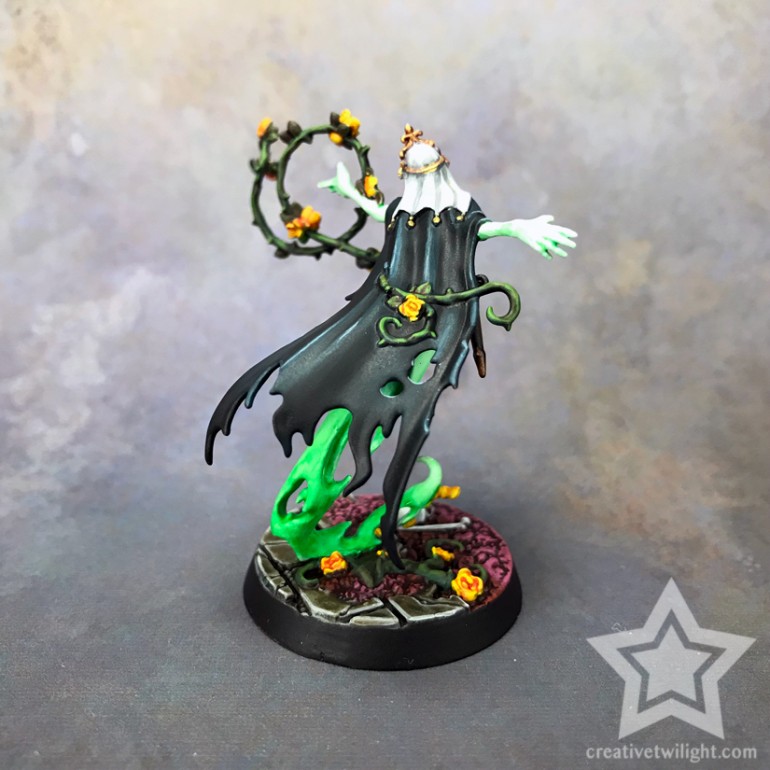



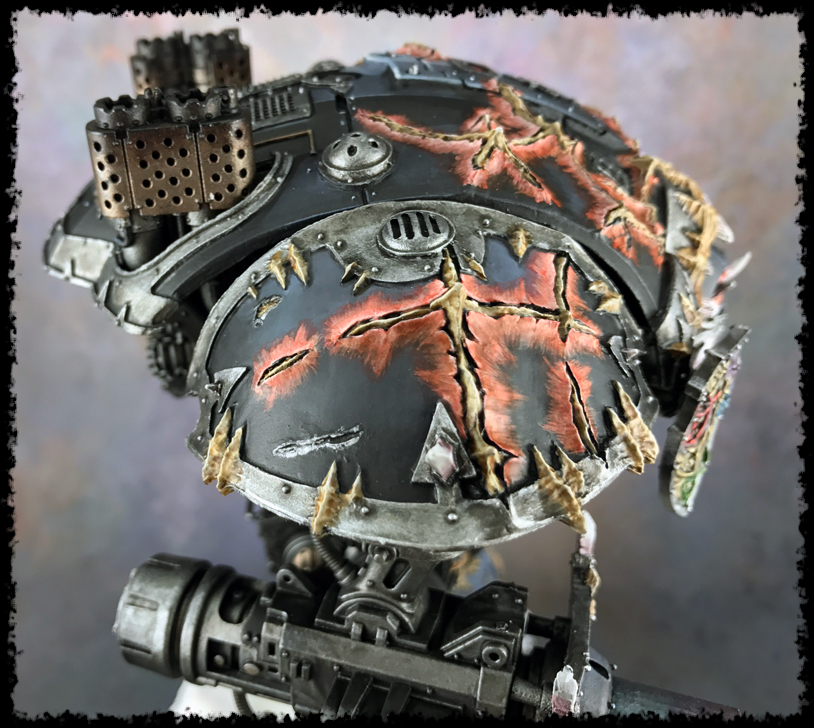
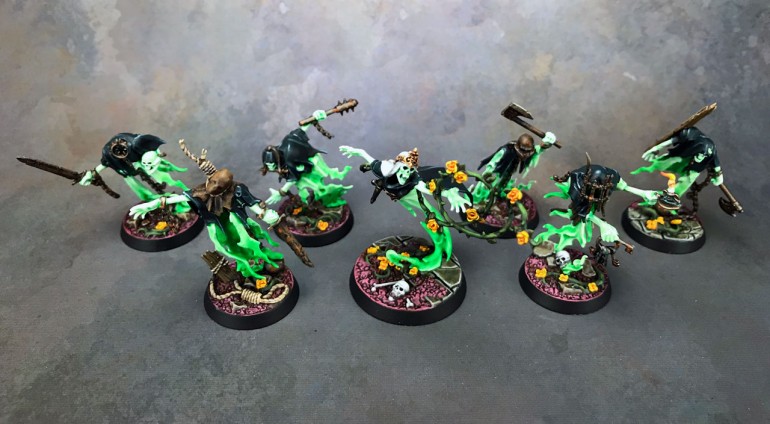
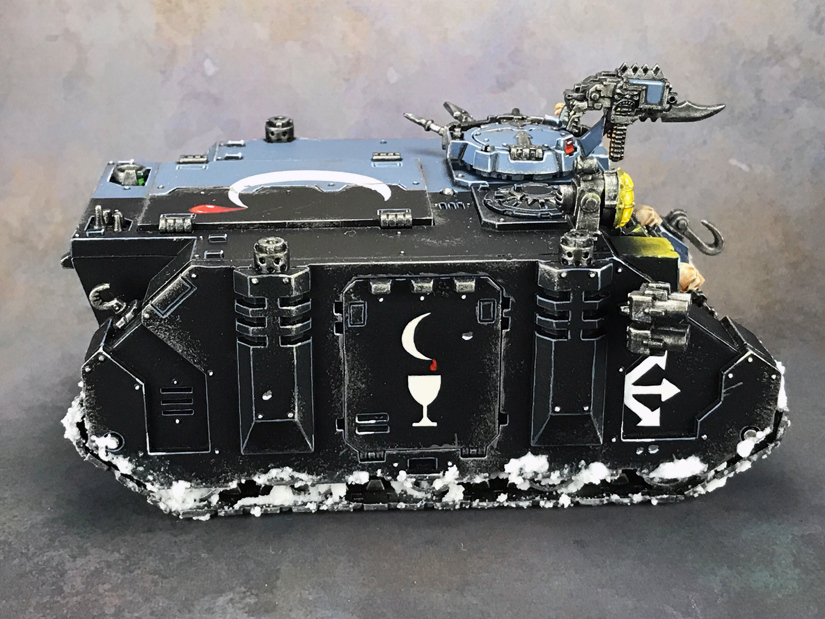
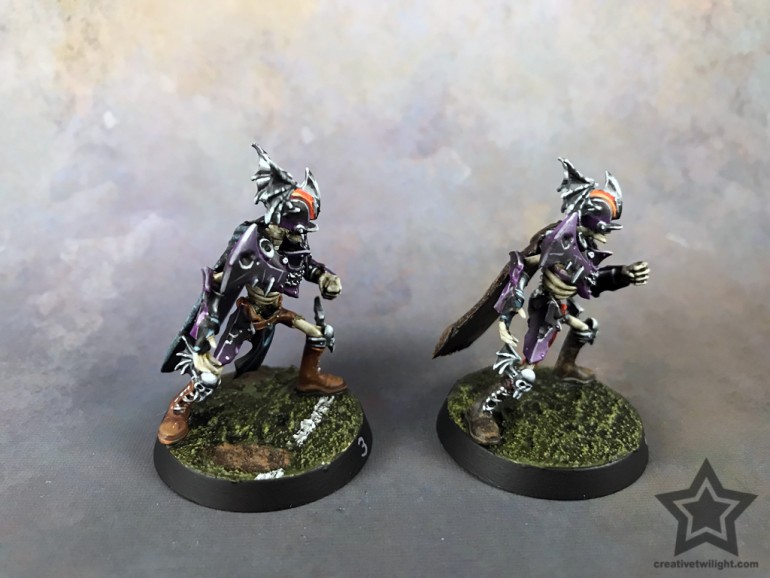





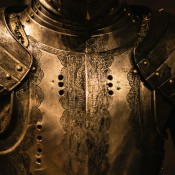
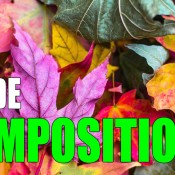

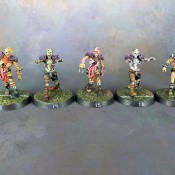
I think I took black for granted in a number of the photos you have there, mainly as you made it look natural. It wasn’t stark. Another one of your guides going into my bookmarks for a future project.
That’s definitely the goal, to have it look natural, so glad it came across that way. Playing with colors like that is something I’m working on. There’s a lot to color theory and I’m a complete novice with it.
I’m trying to think of how to phrase it, but on highly reflective surfaces (that car at the end is a perfect example), there’s only really midtones on one side of the highlight. The other drops off almost immediately to black again. Trying to blend both sides of that highlight will end up making it look like a softer material.
Honestly, the highlights on black are so dependent on the lighting that I usually just go for a satin or even gloss finish and let the light itself do the work. My most successful attempts at actually painting it have usually focused around glazing with like a billion layers of ink or something. The Contrast paints actually look like a really good way to go about it.
You’re right. I talk about that (lighting) in the NMM tutorial I did. Anything highly reflective has those very stark contrasts with little to no transition. I struggle with doing it, as it seems unnatural, but I’m getting better with it.
I once saw someone paint a cockpit for something all black with a very high gloss finish and it looked amazing with the light bouncing off it. Shortcuts like that are great when you don’t want to spend an hour trying to get something just so.
I’ve heard good things with Contrast Paints and doing black. I’m going to have to try it.